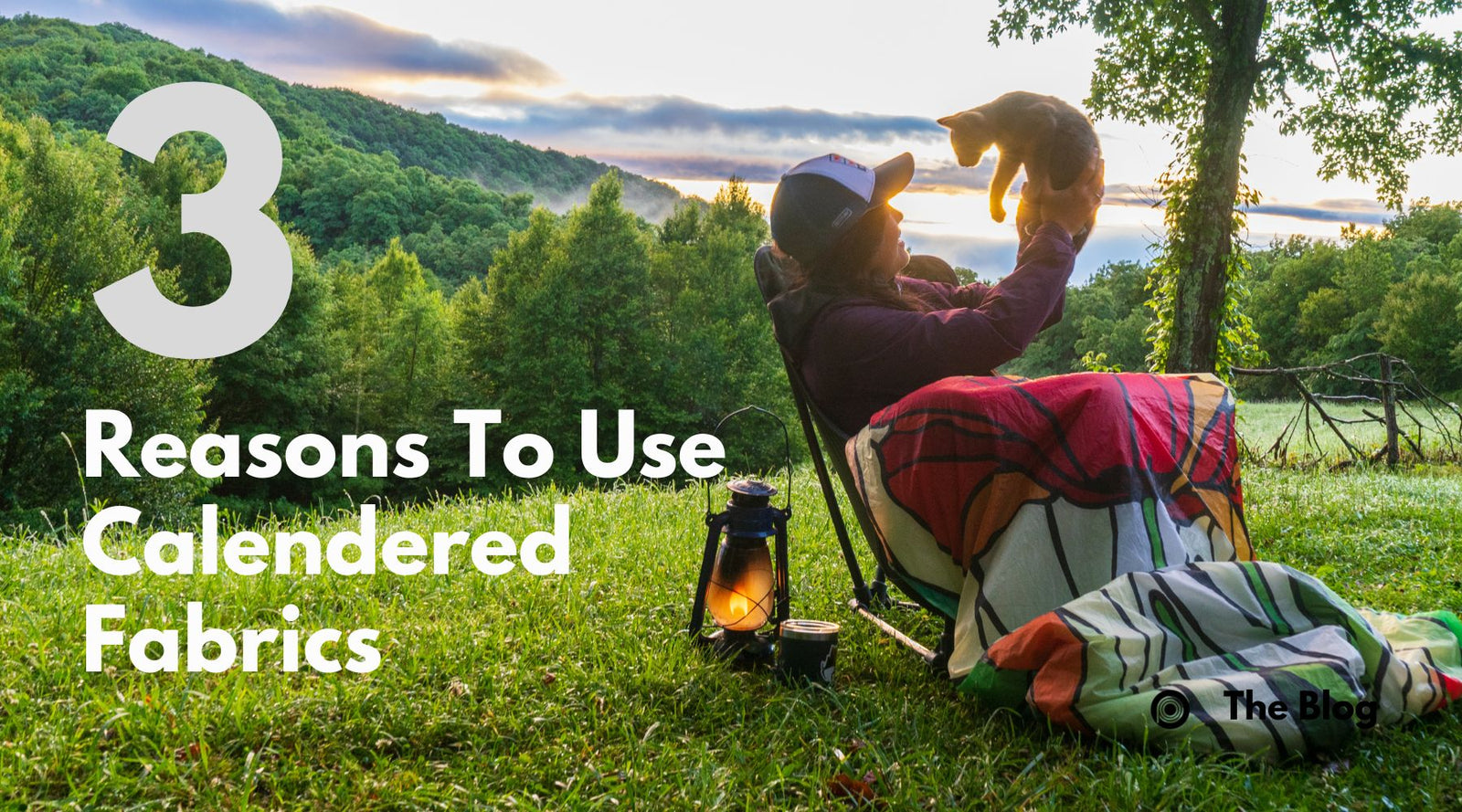Your Cart is Empty
There you are, clicking around the website when you find a great looking fabric. Well, it looks perfect. It has all the right properties and all the right colors.
But wait, there seems to be a word that’s throwing you off. “Do I want this calendered or uncalendered?”
You’re stumped. How do you know if you want a calendered fabric or not?
This is where we come in.
We’re here to get you the tools and give you the knowledge you need to be the DIY hero you are (or will be).
The first thing people notice about calendered fabric is the way it feels. Most technical fabrics have a grain that you feel. The ripstop pattern and weave always construct a texture that affects how the fabric feels when you wear it.
Due to the sealing aspect of the process, calendered fabrics feel incredibly smooth. It’s the type of thing that you would want on your skin. Many people use these fabrics on their quilts, jackets, vests, down beanies, and other places where the fabric may be touching your skin.
For me, the purpose of downproof fabric really resonated when I had a pillow on my couch that was constantly emitting down pieces every single time I sat down (not good).
Natural down is incredibly mischievous and likes to find its way out of the smallest cracks and crevasses, including any space between warp and weft yarns in woven fabric.
Calendered fabrics are designed to be downproof. The heat sealing properties do not allow the threads to spread like on other fabrics. This creates a beautifully contained space for down to remain INSIDE your project (this is good).
You might be catching on by now. The silver bullet to calendered fabric is the heat pressed rollers the fabric goes through at the mill. In addition to downproofing and great hand feel, this process also increases wind resistance. Said another way, when the wind blows, you won't feel it as much. Increased wind resistance makes calendered fabric a great option for clothing, blankets, quilts, or anything where the fabric will serve as a barrier between you and the wind.
One more important note...
There should always be a distinction between wind resistance (i.e. air permeability) and breathability. While you may see these terms used interchangeably, they are NOT the same thing.
Wind resistance is a measure of how much air flows through a fabric. Breathability, on the other hand, measures how well moisture can move through the fabric. That said, the two metrics are related, but refer to different things.
As we've discussed, the calendering process increases wind resistance by sealing up the holes in the weave. This does tend to lower the breathability but certainly does not eliminate it completely.
For example, if we take 1.0 oz HYPER D, the calendared option is both wind resistant and breathable, albeit less breathable than the uncalendered option.
There are a lot of great reasons why calendered fabrics can be a wonderful addition to your project. Let us know what you’re making with calendered fabrics.
If you need help, reach out to our project support team.
Shop Downproof fabrics here.
Shop Wind Resistant fabrics here.
Comments will be approved before showing up.






Jason
August 09, 2022
Great write up. It answered all my questions and helped me make an informed decision on my project.